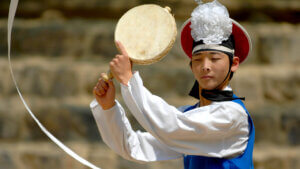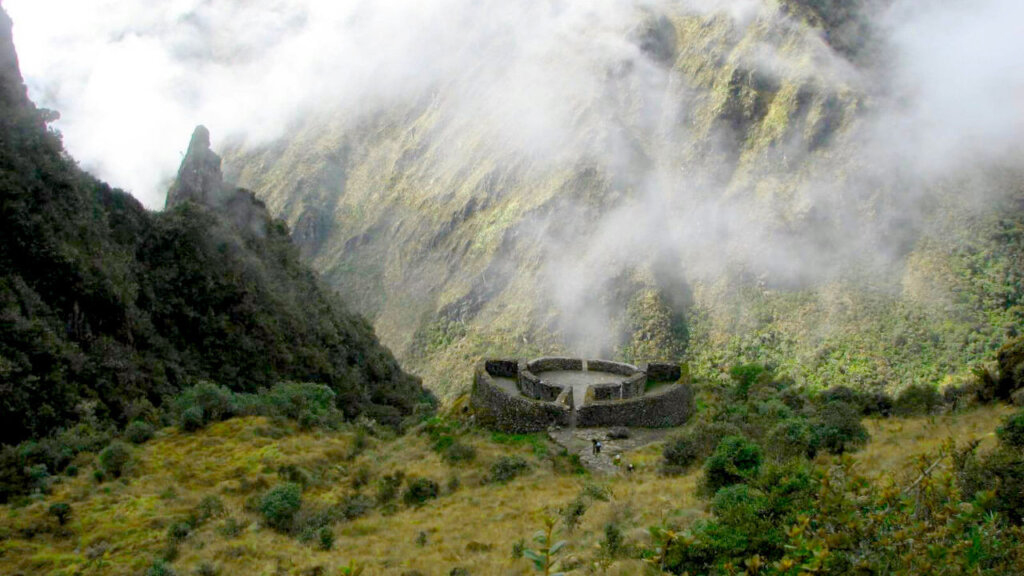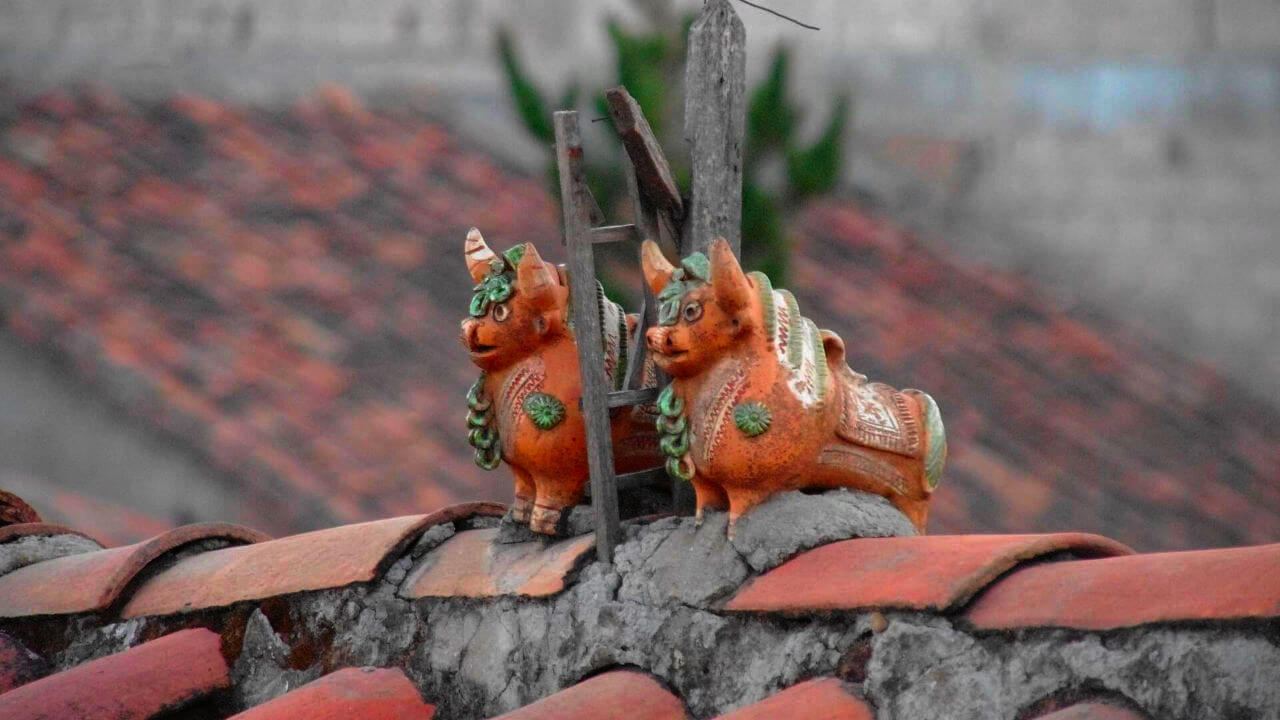
An impressive landmark of Pre-Colombian history is the Machu Picchu on a 2,430 altitude! One of its main structures is the Temple of the Sun, linked to the ancient indigenous Inca religion. Is it true, however, that the Inca sacrificed humans to their Gods? In this post we explore various death practices, including on mummification and Inca human sacrifices. Finally, we learn more about the effect of the coronavirus pandemic on Peruvian burial customs, focusing forced cremation!
Pre-Colombian civilizations, like the Inca and the Chimú, revered their dead in special burial chambers, called Huacas. Additionally, these Andean peoples left their dead at summits of mountains or in the Huacas. Due to the climate of these regions, the bodies would often turn into mummies that remain very well preserved.
Another burial technique originally used by the Aymara and later by the Inca too, was the Chullpas. Those were funerary towers, where they placed the deceased in a fetal position. In addition to that, sometimes they adorned the Chullpas with carvings of lizards. To these ancient civilizations, lizards were symbols of life and regeneration since they could regrow their tails!

The Incas, not unlike other Andean peoples, thought that death has many levels. Firstly, there was of course the biological death of the body. Secondly, there was a more social death. That meant that the dead may be forgotten from the social life since they were not active members anymore.
However, evidence shows that there were many cases both in before and during Inca times that social death did not follow biological death. Specifically, that applied to rich individuals and significant members of the society, such as Emperors and their wives.
The Incas mummified, preserved and clothed their relatives after death, and often did not even consider them fully dead. Additionally, at times the ruling descendant Emperors of these mummified royals would interpret the will of their deceased ancestors. Finally, during special days every year they brought the dead out of their palaces and threw parades to their honor.
The mummification of Andean people dates back to 7.000 years ago, 2.000 years before the Ancient Egyptians!

Experts suggest that the Inca Empire managed to spread so successfully and quickly partially due to how they treated other cultures. For example, that included burial traditions but also elements of reverence of the ancestors. Such ancestral devotion shared by many Andean populations, after all. As a result, the capital city of the Inca Empire, Cuzco, quickly became a very important religious center.
Families from all across the Empire sent their dead loved ones to Cuzco so priests could honor them at the Temple of the Sun. Additionally, the Incas, just like the Mayans and the Aztecs, also practiced human sacrifices. Inca human sacrifices did not take place as a sign of cruelty, though. They saw themselves as the Children of the Sun. Therefore, it was their holy duty to perform human sacrifices at the Temple of the Sun. Moreover, the sacrificed were often children and were called Qhapaq hucha.

First of all, priests fattened up the children often for years prior to the sacrifice. Additionally, they thought that only the healthiest and purest of them are good enough to be sacrificed. After all, the the Gods deserved the best!
Human sacrifices often happened during a famine or to honor the death of an Emperor. Additionally, sacrifices could appease the Gods in order to avoid harsh weather conditions. The children had to consume coca leaves and/or alcohol in order to minimize pain and resistance. Thereafter, priests transferred the children to mountain tops, where they often left them unconscious to freeze to death.
The Spanish colonization of modern day Peru started around the beginning of the 16th century. Additionally, the clergy accompanying the Spanish conquerors started converting local populations immediately. As a result, there was a dramatic decline of indigenous religions and burial customs. Instead, Christianity became the dominant religion. Nowadays this is still the case with more than 75% of the population being Catholic.
Furthermore, Christian burials and perceptions of death are the norm in modern Peru. Usually after three days of having an open casket wake (called velatorio), there is a mass followed by a burial. During the velatorio any number of people between 100 and 300 may attend. The family usually provides snacks and tea or coffee to them.

As mentioned above, both Inca and Catholic death traditions favor earth burials. However, the recent COVID-19 pandemic has posed many challenges to these funeral customs.
Coronavirus hit Peru hard in 2020 with the country reaching some of the highest rates of infections and deaths. Therefore, in March the Peruvian government decided to ban traditional funerals. Additionally, hospitals had to cremate all the victims of the virus upon death.

Traditional celebrations such as the Day of the Dead take place at extremely busy cemeteries, not unlike Mexico. As mentioned above, funerals are also crowded events in Peru and the family likes to keep proximity to the deceased. Because of such customs and with over 200 deaths per day, Peru needed to take action!
However, due to public outrage, forced cremation stopped being mandatory just weeks later. The new softer rule said that only a maximum of five individuals may attend a funeral. Moreover, many hospitals reportedly continued cremating the bodies of coronavirus victims. Due to that, over 4.500 bodies were cremated by the end of August 2020. In other words, that equals to an astonishing 20% of all the people nationally who died due to COVID-19 related issues!

Summing up, these numbers speak of a huge change in the burial traditions of Peru. That is especially important considering that many Catholics believe that the body needs to be returned to the earth. This way the deceased can resurrect during Judgment Day. Finally, Peruvians also pointed out the importance of respecting the wishes of the dead. For example, many people had communicated their preferences regarding funeral arrangements to their relatives, but these were not respected.
We hope you learned something new regarding this country’s death practices!
If you want read more on death practices of other ancient civilizations we suggest our articles on Roman death customs or the Nubian Pyramids in North Sudan. Alternatively, you can read on Ancient Greek funerary traditions or the long history of Chinese funerals.
For death practices of other Latin American countries have a look at our articles on Cuba or Mexico.
The average mixed death rate in Peru was 5,503 per 1.000 (2018). Unfortunately, the COVID-19 pandemic has really left its mark on the country and the death rate in expected to skyrocket in 2020.
Following many Catholic traditions, Peruvians usually bury their dead within three days after death.
Roman Catholicism has the largest following in Peru with a staggering 76,03% according to the 2017 census. Religious syncretism is also common in Peru, since people combine Catholicism and Inca customs and beliefs. The numbers of Protestants and non-religious people are on the rise too.
Despite data suggesting the existence of an organ donor system, there were no utilized transplants in 2019. It could be also the case that no data of utilized organs were registered.